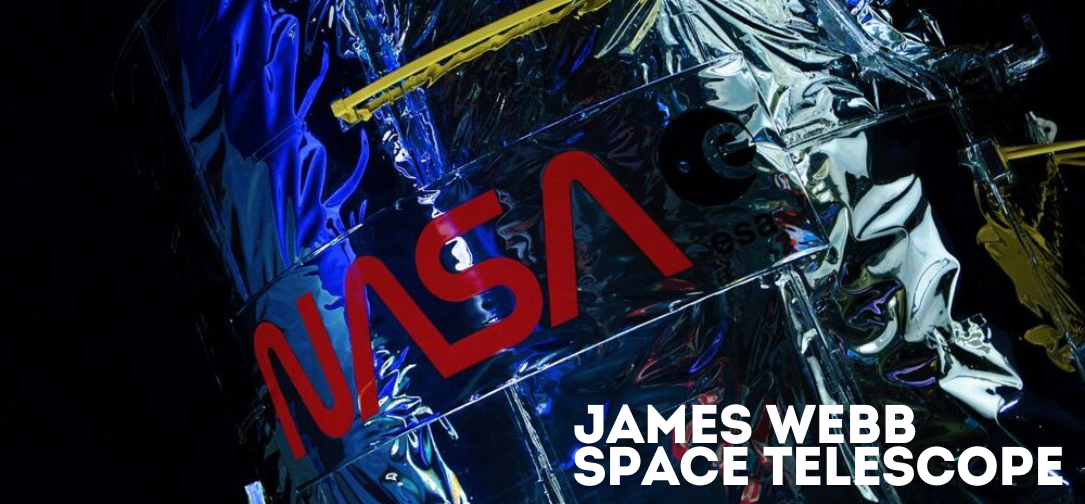Space
Exploring the Latest Discoveries of the James Webb Telescope on Reddit

The James Webb Space Telescope (JWST) has been making waves in the astronomy community since its launch. With its advanced technology, it has opened up a whole new world of discoveries, reshaping our understanding of the universe. In this article, we’ll take a look at some of the latest findings from the JWST and how they are being discussed on platforms like Reddit. From ancient galaxies to the atmospheres of distant exoplanets, the excitement around Webb’s discoveries is palpable.
Key Takeaways
- The JWST has uncovered ancient galaxies that challenge previous models of galaxy formation.
- It has provided insights into the atmospheres of exoplanets, hinting at possible signs of life.
- The telescope has detected cosmic dust in ways we never thought possible, revealing the universe’s hidden structures.
- Community discussions on James Webb Telescope Reddit highlight the excitement and debates surrounding these discoveries.
- Future missions with the JWST promise even more groundbreaking findings as we continue to explore the cosmos.
Significant Discoveries From The James Webb Telescope
Uncovering Ancient Galaxies
The James Webb Space Telescope (JWST) has truly revolutionized our view of the early universe. One of its most significant achievements is the identification of incredibly distant and ancient galaxies. These galaxies existed just a few hundred million years after the Big Bang, offering us a glimpse into the universe’s infancy. It’s like looking back in time! One example is JADES-GS-z14-0, a galaxy whose discovery has provided the most distinctive evidence yet for the rapid formation of large, massive galaxies in the early universe. This discovery allows scientists to study galaxy formation in its earliest stages.
Revealing Exoplanet Atmospheres
JWST isn’t just about looking at distant galaxies; it’s also helping us understand planets orbiting other stars. The telescope’s advanced instruments can analyze the atmospheres of exoplanets, searching for key elements like water vapor, methane, and carbon dioxide. This is crucial in the search for potentially habitable worlds. Imagine finding a planet with an atmosphere similar to Earth’s! It’s a game-changer in the search for life beyond our solar system. Here’s what JWST is doing:
- Analyzing exoplanet atmospheres for biosignatures.
- Determining the composition of these atmospheres.
- Identifying potential candidates for habitable worlds.
Detecting Cosmic Dust
Cosmic dust might sound boring, but it plays a vital role in the universe. It’s the raw material for forming stars and planets. JWST’s infrared capabilities allow it to peer through clouds of dust and gas, revealing hidden regions of star formation. It’s like having X-ray vision for the cosmos! However, JWST has also revealed some surprising things, such as unexpectedly bright young galaxies, missing dust, and mysterious red dots. The telescope is helping us understand the life cycle of stars and the formation of planetary systems. It’s also helping us understand the cosmic dust composition.
The Impact Of Webb’s Findings On Astronomy
The James Webb Space Telescope (JWST) isn’t just taking pretty pictures; it’s fundamentally changing how we understand the universe. It’s like switching from standard definition to ultra HD – suddenly, we’re seeing details we never knew existed. The implications are huge, and astronomers are scrambling to keep up with the new data. It’s an exciting time, but also a bit overwhelming as some long-held theories are being challenged.
Challenging Existing Models
JWST’s observations are throwing some serious curveballs. For example, the telescope has spotted galaxies in the early universe that are far more massive and mature than our current models predict. These findings suggest that our understanding of galaxy formation might be incomplete, or even wrong. It’s forcing scientists to rethink the processes that governed the early cosmos. It’s not just about tweaking the numbers; it’s about potentially rewriting the textbooks. The early universe is more complex than we thought.
New Insights Into Galaxy Formation
While challenging old ideas, JWST is also providing incredible new insights. We’re getting a much clearer picture of how galaxies assemble over cosmic time. The telescope’s ability to peer through dust clouds is revealing the inner workings of star-forming regions, showing us how stars are born and how they influence the evolution of their host galaxies. It’s like watching a cosmic construction site in real-time. Here’s a quick look at some key areas:
- Star Formation Rates: JWST is helping us measure star formation rates in distant galaxies with unprecedented accuracy.
- Galaxy Mergers: We’re seeing how galaxies collide and merge, triggering bursts of star formation and shaping the overall structure of the universe.
- Black Hole Growth: JWST is providing clues about how supermassive black holes grow at the centers of galaxies, and how they interact with their surroundings.
Understanding Dark Matter
Dark matter remains one of the biggest mysteries in cosmology, but JWST’s observations are offering new avenues for investigation. By studying the distribution of galaxies and the way they bend light through gravitational lensing, JWST is helping us map the underlying distribution of dark matter. It’s like using the telescope as a giant dark matter detector. The James Webb Space Telescope is helping us understand the universe better. It’s a slow process, but every new piece of data brings us closer to understanding this elusive substance. It’s a puzzle, and JWST is giving us some crucial new pieces.
Community Reactions On James Webb Telescope Reddit
Excitement Over New Discoveries
Okay, so the James Webb Telescope (JWST) has been dropping images and data like it’s going out of style, and honestly, the Reddit astronomy community is buzzing. You see posts with titles like “HOLY SMOKES LOOK AT THIS GALAXY!” and people just losing their minds over the detail. It’s pretty cool to see. There’s a real sense of shared wonder, like everyone’s experiencing these discoveries together. People are posting zoomed-in crops, color-enhanced versions, and just generally geeking out. It’s a great place to see the raw, unfiltered excitement about space exploration innovations.
Debates On Theories
It’s not all just pretty pictures, though. The JWST’s findings are also sparking some serious debates. You’ll find threads where people are arguing about the implications of certain observations for existing cosmological models. Like, is this galaxy really as old as it looks? Does this exoplanet’s atmosphere actually contain biosignatures? People are digging into the data, citing papers, and throwing around ideas. Sometimes it gets a little heated, but it’s mostly good-natured. It’s cool to see people engaging with the science on such a deep level. It’s not just accepting what NASA says; it’s questioning, analyzing, and trying to figure things out for themselves. It’s a real testament to the power of citizen science and the accessibility of information these days. The discussions are often very technical, but there are also plenty of ELI5 (Explain Like I’m 5) threads for those of us who aren’t astrophysicists.
Sharing Images And Data
One of the best things about the JWST on Reddit is the sharing of images and data. NASA releases all this amazing stuff, but it’s the community that really brings it to life. People are processing raw data to create stunning visuals, highlighting specific features, and making it all more accessible to the general public. There are even people writing scripts to analyze the data and identify potential new discoveries. It’s a collaborative effort, with people building on each other’s work and sharing their results. It’s like a giant, crowdsourced science project, and it’s pretty amazing to watch. Plus, you get to see some truly incredible images that you wouldn’t find anywhere else. It’s a great way to view larger images and learn more about the universe.
The Future Of The James Webb Telescope
Upcoming Missions
So, what’s next for the James Webb Space Telescope? Well, a lot! Astronomers have already booked observing time for the next few years, and the telescope is expected to keep sending back data for at least another decade, maybe even longer if we’re lucky. The telescope’s schedule is packed with investigations, from peering at more distant exoplanets to analyzing the composition of even more early galaxies. It’s like having a front-row seat to the universe’s greatest show, and the show is just getting started.
Potential Discoveries
Honestly, the most exciting part is the unknown. Webb has already thrown some curveballs at existing cosmological models, and it’s likely to keep doing so. We might find entirely new types of celestial objects, or maybe even evidence of things we haven’t even imagined yet. Think about it: Webb is so powerful that it can see things that were previously undetectable. Who knows what other secrets are hiding out there in the cosmos? It’s a bit like exploring a new continent – you know there will be something new, but you have no idea what it will be.
Long-Term Goals
Looking ahead, the long-term goals for the James Webb Space Telescope are pretty ambitious. They include:
- Refining our understanding of the early universe and how the first stars and galaxies formed.
- Searching for biosignatures in the atmospheres of exoplanets, which could potentially indicate the presence of life.
- Mapping the distribution of dark matter and dark energy to better understand the structure of the universe.
Basically, Webb is helping us answer some of the biggest questions in science. It’s not just about taking pretty pictures (though those are nice, too); it’s about fundamentally changing our understanding of the universe and our place in it. It’s a long game, but the potential payoff is huge.
Comparing Webb With Previous Telescopes

Hubble’s Legacy
Hubble really set the stage. It gave us those iconic images and proved how valuable space-based telescopes could be. Hubble showed us the universe in a way we’d never seen before, but it had limitations. It primarily observed in visible and ultraviolet light, which meant dust clouds often blocked its view. It was like trying to look through a smoky room. Hubble’s still kicking, though, and it’s amazing to see how much it has contributed to space exploration.
Technological Advancements
Webb is a whole different beast. It’s not just bigger; it uses different technology. It’s designed to see infrared light, which lets it peer through those dust clouds that blocked Hubble. Think of it like switching from regular glasses to night-vision goggles. Plus, Webb’s mirrors are way more precise, and it’s orbiting much farther away, giving it a clearer view. Here’s a quick comparison:
| Feature | Hubble Space Telescope | James Webb Space Telescope |
|---|---|---|
| Primary Mirror | 2.4 meters | 6.5 meters |
| Wavelength | UV, Visible, Near IR | Near IR, Mid IR |
| Orbit | Low Earth Orbit | Lagrange Point 2 (L2) |
| Operating Temp. | ~200 K | ~50 K |
Different Observational Capabilities
Webb can see things Hubble simply couldn’t. It’s like having a completely new set of eyes on the universe. Because it sees infrared light, it can study the atmospheres of exoplanets and look at some of the earliest galaxies that formed after the Big Bang. Hubble gave us a great foundation, but Webb is building on that, answering questions we couldn’t even ask before. The JWST Advanced Deep Extragalactic Survey is a great example of this. It’s really cool to see how far we’ve come, and I can’t wait to see what Webb discovers next. It’s also interesting to see how the models are being refined to account for the updates Webb has brought us, especially regarding the early universe.
Webb’s Role In Understanding The Early Universe
Studying Cosmic Dawn
The James Webb Space Telescope (JWST) is revolutionizing our understanding of the universe’s earliest moments, specifically the period known as the Cosmic Dawn. Before JWST, peering back to this era was like trying to see through a dense fog. Now, with its advanced infrared capabilities, JWST is starting to reveal the secrets of the first stars and galaxies. JWST’s observations are helping us understand how the universe transitioned from a dark, opaque state to one filled with light and structure.
Identifying First Stars
One of the most exciting aspects of JWST’s mission is its ability to identify the first stars. These weren’t like the stars we see today. They were massive, hot, and short-lived, composed almost entirely of hydrogen and helium. Finding direct evidence of these Population III stars is a major goal. JWST is looking for their unique spectral signatures, which could tell us about their composition, size, and how they influenced the early universe. It’s like finding the original blueprint for everything that came after. Plus, Webb has discovered that early galaxies have unusual chemical features.
Exploring Galaxy Evolution
JWST is also providing unprecedented insights into how galaxies evolved in the early universe. It’s not just about finding the first galaxies, but also understanding how they grew and changed over time. We’re seeing galaxies that are far more massive and mature than expected at such early epochs. These observations are challenging existing models of galaxy formation and prompting scientists to rethink the processes that shaped the universe. The telescope has been studying space for three years, helping us learn about distant stars, galaxies, and planets. The discovery suggests the light from these small galaxies might have played a crucial role in ending the cosmic ‘dark ages’ not long after the Big Bang.
Public Engagement With Webb’s Discoveries
Educational Initiatives
It’s amazing how much the James Webb Telescope has captured the public’s imagination! One of the coolest things is seeing how it’s sparked new educational initiatives. Museums and science centers are creating exhibits showcasing Webb’s images and discoveries. Schools are incorporating Webb’s findings into their curricula, inspiring the next generation of scientists and engineers. There are even online courses and workshops popping up, making astronomy accessible to everyone. It’s not just about pretty pictures; it’s about understanding the universe and our place in it.
Citizen Science Projects
Citizen science projects are another awesome way people are getting involved. These projects allow anyone to contribute to real scientific research using Webb’s data. For example:
- Classifying galaxies based on their shapes.
- Searching for exoplanets in Webb’s observations.
- Analyzing spectra to identify chemical elements in distant stars.
These projects not only help scientists process the massive amounts of data coming from Webb, but they also give ordinary people a chance to make a real difference in astronomy. It’s a win-win!
Social Media Buzz
Social media has been exploding with excitement over Webb’s discoveries. From stunning images of nebulae to groundbreaking data on exoplanet atmospheres, Webb’s findings are constantly trending. Astronomers and science communicators are using platforms like Twitter, Instagram, and Reddit to share the latest news and answer questions from the public. This creates a direct line of communication between scientists and the public, fostering a sense of shared discovery and wonder. Plus, the memes are pretty great too!
Wrapping Up Our Journey with Webb
So, after three years of the James Webb Space Telescope working its magic, it’s clear we’ve only scratched the surface of what’s out there. The discoveries are wild, from ancient galaxies to strange cosmic phenomena we never expected. Reddit has been buzzing with excitement, sharing theories and insights as we all try to wrap our heads around these findings. It’s a thrilling time for space enthusiasts and casual observers alike. Who knows what else Webb will uncover in the future? The universe is vast, and there’s still so much to explore.
Frequently Asked Questions
What is the James Webb Space Telescope?
The James Webb Space Telescope (JWST) is a powerful space telescope that helps scientists study stars, galaxies, and planets far away in the universe.
What kind of discoveries has Webb made?
Webb has found ancient galaxies, studied the atmospheres of distant planets, and detected cosmic dust that we couldn’t see before.
How does Webb help us understand the early universe?
Webb looks back in time to see the first stars and galaxies that formed after the Big Bang, giving us clues about how the universe began.
How are scientists using Webb’s data?
Scientists are using Webb’s findings to challenge old ideas about the universe and learn more about how galaxies form and evolve.
What do people think about Webb’s discoveries?
Many people are excited about Webb’s discoveries, and they share their thoughts and images on platforms like Reddit.
What are the future plans for the James Webb Space Telescope?
Webb will continue to explore the universe, looking for new discoveries and answering questions about space for many years to come.
-

 Press Release6 days ago
Press Release6 days agoCrypto WINNAZ Launches First On-Chain Yield Engine for Meme Coins, Enabling 20x–300x Returns
-

 Press Release3 days ago
Press Release3 days agoBellarium ($BEL) Price Prediction: Could It Hit $5 by 2026?
-

 Press Release23 hours ago
Press Release23 hours agoPreventive Vaccines Market to Witness Strong Growth by 2035
-

 Press Release3 days ago
Press Release3 days agoWhy Alaxio (ALX) Is a Top Pick for Smart Crypto Investors
-

 Business2 days ago
Business2 days agoHow Managed IT Solutions Help Small Teams Compete at Enterprise Scale
-

 Press Release24 hours ago
Press Release24 hours agoGreen Bio Chemicals Market Poised for Sustainable Growth amidst Global Shift to Eco-Friendly Alternatives by 2035
-

 Press Release23 hours ago
Press Release23 hours agoIndustrial Boiler Market Expected to Surpass USD 24.4 Billion by 2035 Amid Growing Demand for Energy Efficiency and Industrialization
-

 Press Release23 hours ago
Press Release23 hours agoFill-Finish Pharmaceutical Contract Manufacturing Market Expected to Flourish Amid Biopharmaceutical Boom and Global Outsourcing Trend by 2035










